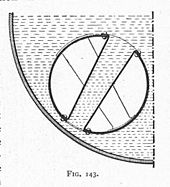This article includes a list of general references, but it lacks sufficient corresponding inline citations .(February 2012) |
Boilers for generating steam or hot water have been designed in countless shapes, sizes and configurations. An extensive terminology has evolved to describe their common features. This glossary provides definitions for these terms.
Contents
Terms which relate solely to boilers used for space heating or generating hot water are identified by (HVAC).







